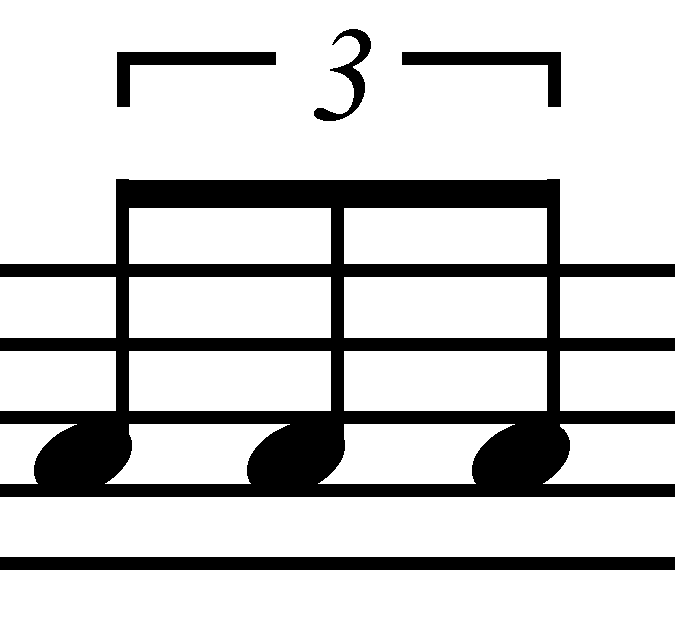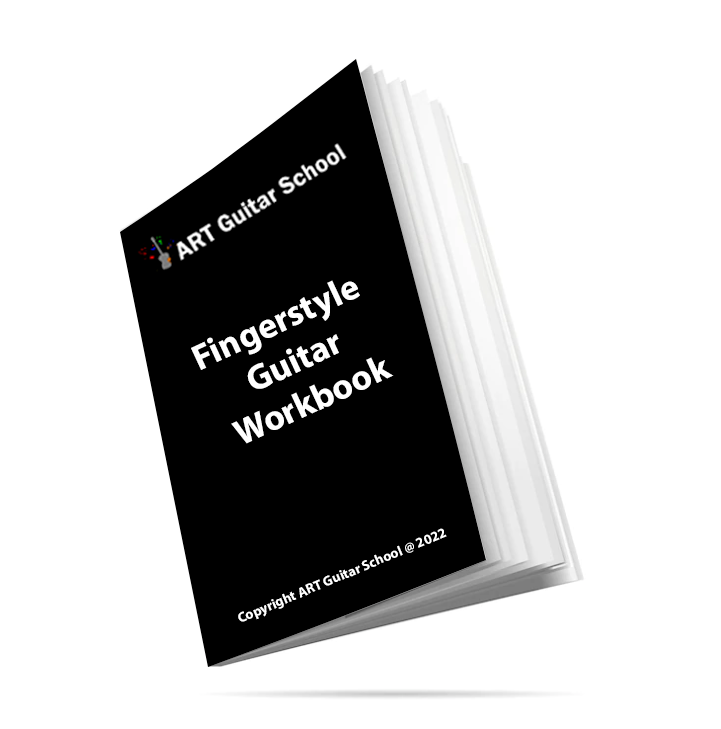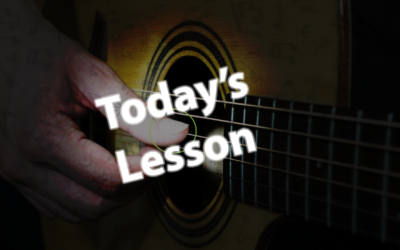One of the most common questions in regards to rhythm is how to play a triplet picking pattern. In order to do so you must first understand how a triplet works.
A triplet is split evenly into three parts within a quarter note. It’s like squeezing 3 eighth notes into one beat however, the duration of each is now slightly shorter due to the limited amount of time to fit each note within that beat.
Rhythm #1
Here is a quarter note pattern to start with. Pluck each note as one beat.
We added a half note at the end to fulfill the measure.

Rhythm #2
Now let’s try an eighth note pattern. Pluck two notes for each beat. They must fit evenly within the quarter note on the down and up beats.

Rhythm #3
Finally, this is the triplet pattern. I would recommend started by plucking only the first string with this rhythm. Count the rhythm as “one and ah, two and ah”.

Here is a video on popular finger picking patterns to start with:
If you were having trouble making the trip it’s even within the beat try using a metronome set a quarter notes 40 BPM and practice playing three notes within each beat.
FOLLOW US ON
Get our FREE Fingerstyle Workbook!
RELATED BLOG POSTS
Basic Fingerpicking Patterns for Beginners
Fingerpicking is a fundamental skill for guitarists that opens up a world of musical expression. If you’re a beginner eager to enhance your playing, mastering basic fingerpicking patterns is an excellent first step. These patterns provide the foundation for more complex techniques and allow you to play a variety of songs across different genres.
Start with the classic PIMA technique, which stands for Thumb (P), Index (I), Middle (M), and Ring (A). A simple yet effective pattern is the alternating bass pattern, where you pluck the bass note with your thumb and the higher strings with your fingers. For example, on a C chord, pluck the 5th string (C) with your thumb, then the 3rd (G) with your index finger, 2nd (E) with your middle finger, and finally the 1st (C) with your ring finger. Repeat this cycle to create a soothing rhythm.
Another essential pattern is the Travis picking technique, where the thumb plays a steady bass line while the fingers pluck the melody. This creates a rich, layered sound. Start slow and focus on accuracy before increasing your speed.
Practicing these patterns not only builds muscle memory but also helps you develop a sense of timing and rhythm. As you progress, try combining different patterns and experimenting with dynamics to make your playing more expressive. Remember, consistency is key, so dedicate time each day to practice these fundamental fingerpicking patterns.
Basic Chords Every Guitarist Should Know
As a beginner guitarist, learning a few basic chords is the first step toward playing your favorite songs. These chords form the foundation of much of popular music and will serve you well as you progress in your guitar journey. Here are some essential chords every guitarist should master.
1. G Major: One of the most popular chords, G major, offers a rich sound. It requires you to stretch your fingers a bit, but with practice, you’ll find it becomes easier. It’s often used in folk, rock, and pop music.
2. C Major: C major is another fundamental chord that appears in countless songs. It has a bright, cheerful sound and is essential for playing in many pop and rock progressions.
3. D Major: This chord is a staple in a variety of genres, especially in country and folk music. It’s relatively easy to play and can be a great transition from C major.
4. E Minor: E minor is one of the easiest chords to learn since it only requires two fingers. Its darker tone contrasts nicely with major chords and is frequently used in progressions.
5. A Major: A major is a great chord for beginners because it uses only three fingers. It’s commonly found in many popular songs, making it essential for aspiring guitarists.
6. A Minor: Like E minor, A minor is simple and introduces you to a more somber sound. It pairs well with C and E minor in chord progressions.
7. F Major: Though a bit more challenging due to its barre form, F major is vital for playing many rock and pop songs. With practice, you’ll develop the strength and technique needed to play this chord effectively.
8. B7: This chord is commonly used in blues and folk music. It’s relatively easy to learn and can serve as a stepping stone to more complex chords.
Practice Tips: Start by practicing each chord slowly, ensuring that each note rings clear. Transitioning between chords may feel awkward initially, but with regular practice, your fingers will learn the movements. Use a metronome to keep time, and gradually increase your speed as you become more comfortable.
Understanding these basic chords will open up a world of songs for you to play. With dedication and practice, you’ll soon be strumming along to your favorite tunes in no time!
Essential Guitar Accessories for Beginners
Starting your guitar journey is thrilling, but having the right accessories can make a world of difference in your playing experience. Here are some essential guitar accessories every beginner should consider.
1. Tuner: A good tuner is a must-have. Whether it’s a clip-on tuner, pedal tuner, or a tuning app on your smartphone, keeping your guitar in tune is essential for developing your ear and enjoying your practice.
2. Picks: Guitar picks come in various shapes and thicknesses. As a beginner, it’s worth experimenting with a few different types to see what feels comfortable. Thicker picks offer more control, while thinner picks allow for more flexibility.
3. Guitar Strap: If you plan to play while standing, a sturdy guitar strap is necessary. Look for one that’s adjustable and comfortable, especially if you’ll be practicing for long periods.
4. Gig Bag or Hard Case: Protecting your guitar is paramount. A gig bag is lightweight and portable, while a hard case offers maximum protection against bumps and drops. Consider your lifestyle and how you plan to transport your guitar.
5. Capo: A capo allows you to change the key of the songs you’re playing, making it easier to match your voice or play along with others. It’s a simple tool but incredibly useful for expanding your musical versatility.
6. Extra Strings: Strings can break, and they wear out over time. Having a set of spare strings on hand will save you from an unexpected interruption during practice.
7. Guitar Stand: Keeping your guitar on a stand not only makes it easily accessible but also protects it from damage. It encourages you to pick it up more often and practice.
8. Metronome: Developing a good sense of timing is crucial for any musician. A metronome helps you practice playing in time, making it an invaluable tool for beginners.
9. Instructional Material: Whether it’s books, online courses, or apps, having a structured way to learn will help accelerate your progress. Look for resources that cover the basics, including chords, strumming patterns, and simple songs.
10. Music Notebook: Documenting your practice sessions, progress, and song ideas can be incredibly motivating. A dedicated notebook can help you track what you’ve learned and keep your goals in sight.
By equipping yourself with these essential accessories, you’ll create an environment that fosters growth and enjoyment as you embark on your guitar journey. Happy playing!




0 Comments